b) Turn on the ignition
Attention: do not start the engine.
V) Check for fuel pressure in the hose coming from the fuel filter.
Attention: at this moment, noise of fuel is heard flowing from the fuel differential pressure regulator to the return line.
Check fuel pressure.
A) Make sure the battery voltage is at least 12V.
b) Disconnect (-) battery wire.
V) Substitute a suitable container (or put a rag) under the fuel manifold.
G) Slowly unscrew the bypass bolt and disconnect the fuel pipe from the fuel manifold and remove the gaskets, disconnect the fuel inlet hose from the fuel pipe.
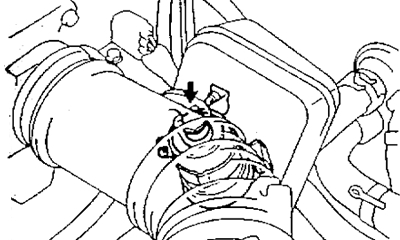
4A-FE, 5A-FE
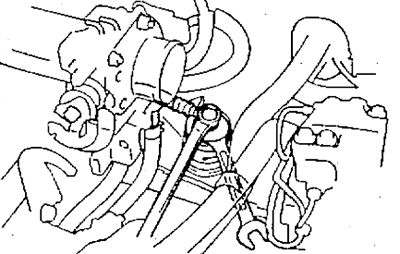
7A-FE
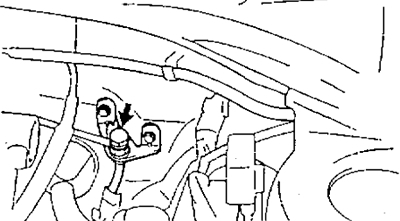
3S-FE, 4S-FE
d) Using new gaskets and bypass bolt, install the fuel inlet hose and pressure gauge to the fuel pipe.
- Tightening torque - 30 Nm
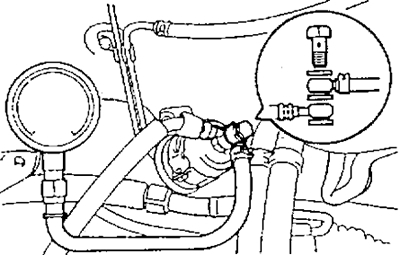
4A-FE, 5A-FE
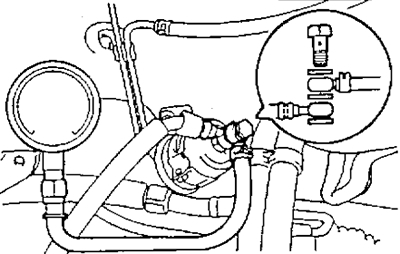
7A-FE
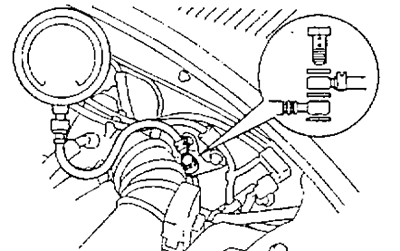
3S-FE, 4S-FE
e) Wipe up spilled fuel.
and) Jumper the terminals "FP" And "+V" diagnostic socket.
h) Connect (-) wire to the battery.
And) Turn on the ignition.
To) Measure fuel pressure at idle speed.
- Rated fuel pressure - 2.75-3.15 kg / cm2
If the pressure is higher, replace the fuel pressure regulator.
If the pressure is low, check:
- fuel hoses and their connections,
- fuel pump,
- fuel filter,
- fuel pressure control.
l) Remove the jumper from the diagnostic socket.
m) Start the engine.
n) Disconnect the vacuum hose from the fuel pressure regulator and plug it.
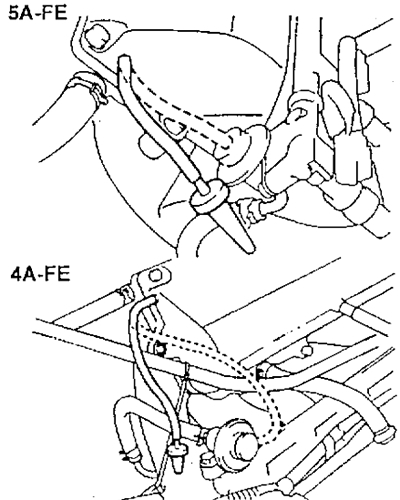
4A-FE, 5A-FE
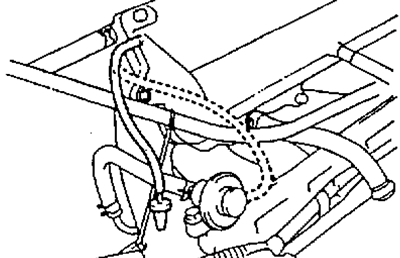
7A-FE
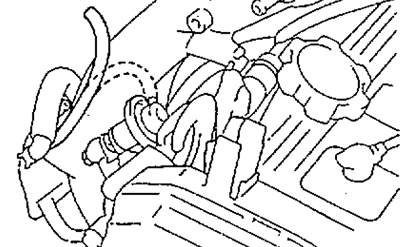
3S-FE, 4S-FE
o) Measure fuel pressure at idle.
- Nominal fuel pressure - 2.35 kg / cm2
P) Reconnect the vacuum hose to the regulator.
p) Stop the engine and make sure that the fuel pressure remains at least 1.5 kg/cm2 within 5 minutes of stopping the engine.
If not, check fuel pump, fuel pressure regulator and/or injectors.
With) After checking the fuel pressure, disconnect again (-) battery wire. Carefully remove the gauge, being careful not to splash fuel.
T) Using two new gaskets, connect the fuel inlet hose to the fuel pipe by tightening the bypass bolt.
Torque:
- 4A-FE, 5A-FE, 4S-FE - 30 Nm
at) Connect (-) wire to the battery.
f) Make sure there is no fuel leakage.
